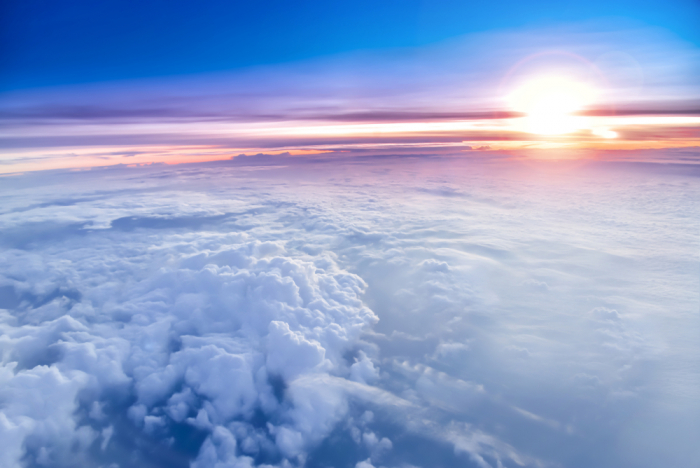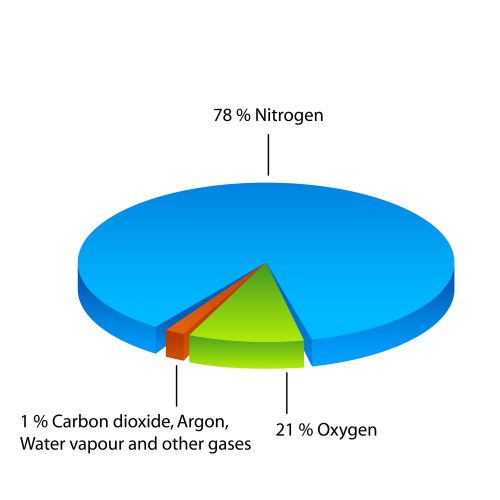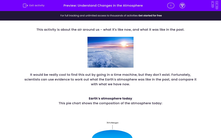This activity is about the air around us - what it's like now, and what it was like in the past.

It would be really cool to find this out by going in a time machine, but they don't exist. Fortunately, scientists can use evidence to work out what the Earth's atmosphere was like in the past, and compare it with what we have now.
Earth's atmosphere today
This pie chart shows the composition of the atmosphere today:

About four-fifths of the gas in the atmosphere is nitrogen. About one-fifth is oxygen. There is a small amount (about 1%) of argon, and a very small amount (about 0.04%) of carbon dioxide. Although the proportion of carbon dioxide is tiny, there is still enough carbon dioxide to have important effects on the Earth's environment.
Earth's atmosphere in the past
The planet Venus is like the Earth in some ways, but its atmosphere is very different. The atmosphere on Venus is nearly all carbon dioxide, with a small amount of nitrogen. Scientists think that Earth's atmosphere when it first formed (about 4.6 billion years ago) was like this, with lots of carbon dioxide and water vapour which had escaped from volcanoes.

Gradually, the Earth cooled down. About 3.8 billion years ago, it became cool enough for water vapour in the atmosphere to condense and make liquid water, which collected in oceans. A lot of the original carbon dioxide went from the atmosphere to the oceans.
The next big change was the appearance of algae on planet Earth. Algae are small green plant-like organisms - you often see them floating on the top of ponds, like this:

Green plants gradually converted nearly all of the carbon dioxide in the Earth's atmosphere to oxygen, by photosynthesis:
carbon dioxide + water → glucose + oxygen
Some of the oxygen produced ended up in rocks (for example, iron oxide), but after a time, oxygen gas collected in the atmosphere as well. That eventually gave us the atmosphere we have now.
That's basically the story. There's lots of things happening, and it's important to think about them in the right order, so let's summarise them in a table:
| How long ago? | What happened? | How did this affect the atmosphere? |
|---|---|---|
| 4.6 billion years ago | Earth formed and volcanoes started erupting. | The atmosphere was full of carbon dioxide, with some water vapour. |
| 3.8 billion years ago | Earth cooled enough for liquid water to condense. | Water went from the atmosphere into oceans, and some carbon dioxide dissolved in the oceans as well. |
| 2.7 billion years ago | Algae appeared and started to photosynthesise. | Carbon dioxide was removed from the atmosphere. Initially, the oxygen produced mainly went into rocks. |
| 2.2 billion years ago | Rocks could take no more oxygen. | Oxygen levels in the atmosphere began to increase until there was almost no carbon dioxide left in the atmosphere. |
That's the outline of the story. Scientists aren't exactly sure about the precise dates, or some of the details, but this outline is consistent with a lot of things we see around us. Without a time machine (and nobody knows how to make one of those), it's the best we can do.
Now it's time for some questions.








